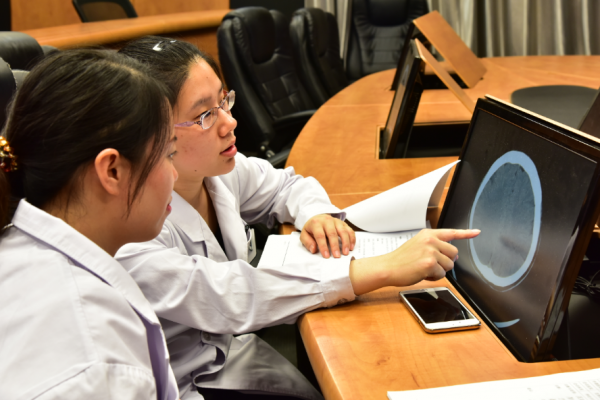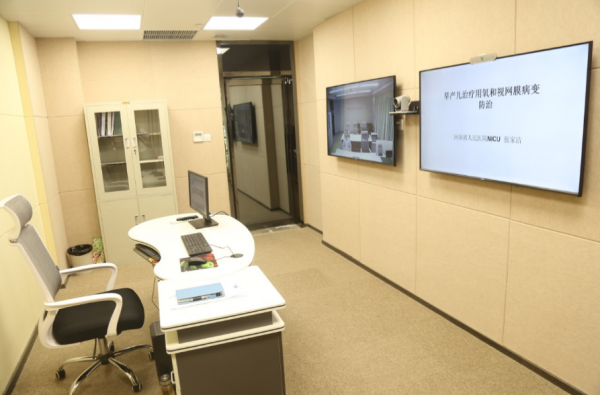Analyze the beautiful fairy tale of telemedicine, what kind of telemedicine technology is the most accepted?
The domestic hospital telemedicine has evolved from the initial TV monitoring and telephone remote diagnosis to support real-time video remote consultation activities, and supports non-real-time consultation functions such as radiology and pathology reading. A relatively complete medical document record is established, and data sharing with the hospital's electronic medical record system and imaging system is realized, thereby realizing two-way communication with the hospital system such as consultation information, examination information, and image information. Just as smart healthcare solutions automatically collect and intelligently process a variety of healthcare business data to fully enhance the patient experience and maximize patient safety.
Telemedicine, a seemingly beautiful fairy tale, is highly accepted by the hospital. What kind of telemedicine technology is best accepted? At present, from the perspective of the development of the US market, the most basic technology of telemedicine, the video communication and video transmission of doctors and patients, has the highest acceptance, and the remote patient tracking and mobile application of the hype are widely sought after by the media and investors. But the lowest.

The International Non-Profit Organization Healthcare Information and Management Systems Society (HIMSS) conducted a telemedicine survey. According to the survey results, according to the proportion of use, nearly 60% of respondents indicated that they use two-way video (57.8%), followed by video transmission (55.5%) and Email (44.1%), then video. Meetings (35.5%), while the remote patient tracking and mobile phone app apps that were sought after by the investment were still low, only 26.1% and 19.9% ​​of respondents said they used the two technologies.
It must be pointed out that more than 70% of the more than 400 respondents who participated in the survey were hospital administrators, including department heads and managers, and only 10% of the respondents were doctors or nurses. This is because the management and medical functions of American hospitals are separate, the managers are responsible for commercial operations, usually the medical management background, and the doctors focus on medical treatment, which is very different from the administrative functions and medical functions of Chinese doctors. Of course, the manager's idea may be different from that of the doctor, but since the manager plays a decisive role in the improvement of the hospital's model, its view is still very valuable.
The survey shows that even in the US market where telemedicine is growing at a speed, the hospital's primary consideration for accepting this technology is still to fill the gaps in face-to-face medical care, and the remote patient control and apps that are highly sought after by investment cannot be immediately Solve the problem under the line, ranked behind in the use acceptance.

This is actually the same in China. The primary problem with telemedicine solutions is to save the energy and time of doctors and patients. Offline clinics can be switched to online video. This technique seems to be the simplest, but it is also the most effective as an offline service supplement. Image transmission is also a very practical need. Image transmission services are required between doctors, doctors and patients, hospitals and hospitals. This point is consistent with the needs of the United States and China. The problem faced by the two countries at this point is that the hospital's system is varied, and the patient's data comes from different hospitals. Every time you change to a hospital or a doctor needs to share past medical history and examination data, so image transmission and storage become done. One of the urgent needs.
Under the megatrend that 5G is about to be commercialized, network speed is no longer a hindrance to telemedicine video transmission. For example, the “Connected Wisdom Graded Medical Treatment Service System†established by the People's Hospital of Henan Province not only interconnected with the information exchanges of 17 prefecture-level and county-level cooperative hospitals, but also carried out remote diagnosis and treatment with well-known medical institutions at home and abroad. Interconnection of information systems such as surgery, anesthesia, first aid, and intensive care between medical institutions. In the first year of operation, the system has carried out over 4,000 cases of remote consultation, nearly 15,000 cases of remote electrocardiogram diagnosis, over 10,000 cases of remote pathology diagnosis, about 9,000 cases of difficult disease consultation, over 1200 demonstration exercises, 2000 teaching and training sessions, and remote rounds. Nearly 30,000 people and about 200 patients were followed up in different places, and achieved remarkable results.
Many domestic service providers focusing on remote video, such as Southern Telecom's telemedicine solution, have landed dozens of national benchmark cases and infiltrated into various sub-sectors such as top three hospitals, specialist hospitals, medical institutions, and pharmaceutical companies in the country. Various medical institutions have realized various applications such as remote consultation, remote examination, mobile ward, remote patient image sharing, stroke first aid, digital operating room, remote surgery teaching, remote physician training, etc., for the national wisdom medical, graded diagnosis and treatment, etc. The floor-to-floor deployment of the project adds remote collaboration technology to help.
Ultrasonic Cleaner,Electric Lightweight Manual Wheelchair,Economy Electric Wheelchair,Travel Wheelchair
Guangdong Widinlsa International Co.Ltd , https://www.gdwidinlsa.com